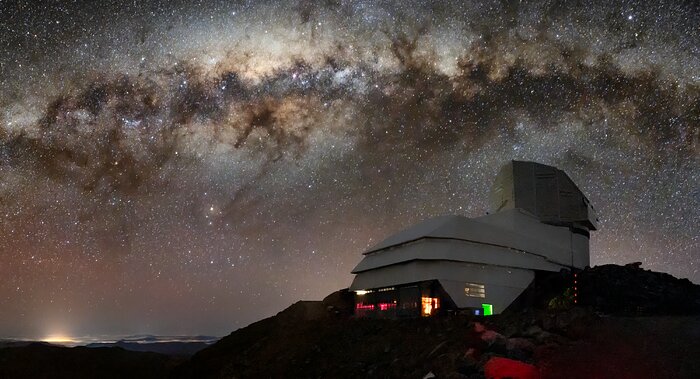Rubin Observatory and Its Target
This image captures not only Vera C. Rubin Observatory, a Program of NSF NOIRLab, but one of the celestial specimens Rubin Observatory will observe when it comes online: the Milky Way. The bright halo of gas and stars on the left side of the image highlights the very center of the Milky Way galaxy. The dark path that cuts through this center is known as the Great Rift, because it gives the appearance that the Milky Way has been split in half, right through its center and along its radial arms. In fact, the Great Rift is caused by a shroud of dust, which blocks and scatters visible light. This dust makes the Great Rift a difficult space to observe. Fortunately, Rubin is being built to conduct the Legacy Survey of Space and Time (LSST). This survey will observe the entire visible southern sky every few nights over the course of a decade, capturing about 1000 images of the sky every night and giving us a new view of our evolving Universe. The LSST is set to probe four areas of science, one of which is mapping the Milky Way to answer questions about its structure and formation. Once Rubin Observatory comes online in 2024, scientists will be able to access the data taken every night of operation.
Rubin Observatory is a joint initiative of the National Science Foundation and the Department of Energy (DOE). Once completed, Rubin will be operated jointly by NSF NOIRLab and DOE's SLAC National Accelerator Laboratory to carry out the Legacy Survey of Space and Time.
Credit:Rubin Observatory/NSF/AURA/B. Quint
About the Image
| Id: | iotw2207a |
| Type: | Photographic |
| Release date: | Feb. 16, 2022, noon |
| Related announcements: | ann24022 |
| Size: | 7396 x 4002 px |
About the Object
| Category: | Vera C. Rubin Observatory |
